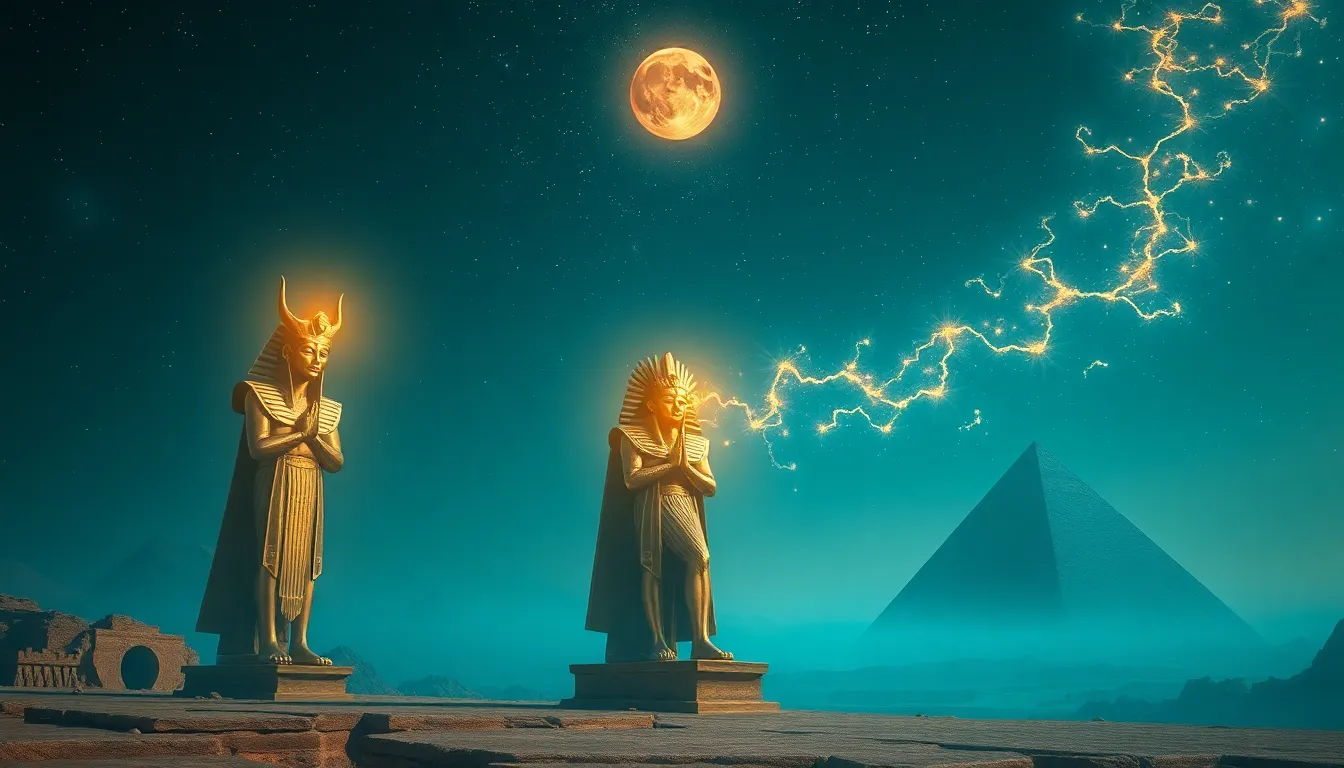The Pharaoh’s Divine Connection to the Cosmos
I. Introduction
The Pharaoh of ancient Egypt was more than just a political leader; he was a central figure in the spiritual and cultural life of the society. The Pharaoh was seen as a divine being, a bridge between the gods and the people, embodying the will of the deities on earth. This divine connection extended beyond the terrestrial realm and into the cosmos, where celestial phenomena were believed to reflect the will and order of the gods.
This article explores the significance of the Pharaoh’s divine connection to the cosmos, examining how this relationship informed the religious practices, architectural achievements, and cultural identity of ancient Egypt. By understanding this connection, we can gain deeper insights into the beliefs that shaped one of history’s most fascinating civilizations.
II. Historical Context of the Pharaoh’s Divine Status
The origins of pharaonic power in ancient Egypt can be traced back to the unification of Upper and Lower Egypt around 3100 BCE. The first Pharaoh, Narmer, established a system of governance that intertwined politics with religion, paving the way for future rulers to adopt a divine status.
The Pharaoh was regarded as a living god, often associated with deities such as Horus, the sky god, and Osiris, the god of the afterlife. This belief system fostered practices that reinforced the Pharaoh’s sacred identity, including:
- Rituals performed during coronation ceremonies to affirm divine favor.
- Public proclamations of divine lineage, linking the Pharaoh to the gods.
- Construction of temples dedicated to their worship and the worship of the gods.
Mythology and religion were pivotal in shaping the Pharaoh’s identity, creating a narrative that emphasized the ruler’s role as the divine mediator between the deities and the Egyptian people.
III. Cosmology in Ancient Egyptian Beliefs
Ancient Egyptian cosmology was rich and complex, incorporating a multitude of deities, myths, and astronomical elements. The cosmos was often viewed as a reflection of divine order, where every star and planet played a role in the grand narrative of creation and existence.
Key deities associated with the cosmos included:
- Ra: The sun god, representing life and creation.
- Osiris: The god of the afterlife, symbolizing resurrection and continuity.
- Isis: The goddess of magic and motherhood, often associated with the protection of the pharaoh.
Celestial bodies held immense significance in ancient Egyptian religious practices. The rising and setting of stars, particularly Sirius, coincided with vital agricultural events, linking the cosmos to the Nile’s flooding and harvest cycles.
IV. Architectural Reflections of Cosmic Beliefs
The architecture of ancient Egypt serves as a testament to the civilization’s cosmic beliefs. Temples and pyramids were not merely structures; they were designed as cosmic symbols that reflected the divine order of the universe.
Many architectural features were aligned with celestial events such as:
- Solstices: Temples were often oriented to capture the first rays of the sun during the summer solstice.
- Equinoxes: Structures might align to mark the changing of seasons, reflecting agricultural cycles.
Iconography and inscriptions within these structures frequently portrayed the Pharaoh’s divine connection, illustrating scenes of the ruler receiving blessings from the gods or participating in celestial rituals.
V. The Pharaoh’s Role in Maintaining Cosmic Order (Ma’at)
At the heart of ancient Egyptian culture was the concept of Ma’at, which represented truth, balance, and cosmic order. The Pharaoh was viewed as the embodiment of Ma’at, responsible for maintaining harmony between the gods and humanity.
The Pharaoh acted as a mediator, performing rituals and ceremonies to reinforce cosmic balance, including:
- Offering sacrifices to the gods to ensure their favor.
- Participating in festivals that celebrated the cycles of nature and the gods.
- Administering justice and governance in accordance with Ma’at, ensuring societal stability.
VI. Astronomical Practices and Observations
The ancient Egyptians were keen astronomers, utilizing their observations of celestial bodies to inform both their agricultural practices and religious calendars. They developed a sophisticated understanding of the stars and their movements.
Tools and methods for celestial observations included:
- Merkhet: A sighting tool used for aligning structures with stars.
- Water clocks: Used to measure time and track celestial events.
Astronomy influenced various aspects of Egyptian life, including the timing of festivals and agricultural activities, ensuring that these practices aligned with the cycles of nature.
VII. The Afterlife and Cosmic Continuity
Beliefs about the afterlife were deeply intertwined with the Pharaoh’s cosmic connection. The journey to the afterlife was seen as a celestial voyage, with the stars serving as guides for the soul.
Burial practices and tomb designs reflected this connection, emphasizing the importance of preparing the Pharaoh for eternity. Key elements included:
- Elaborate tombs filled with goods for the afterlife, often decorated with celestial motifs.
- The use of the Pyramid Texts, inscribed spells intended to guide the deceased to the stars.
This cosmic symbolism reinforced the belief that the Pharaoh would join the gods in the afterlife, maintaining a divine presence in both realms.
VIII. Conclusion
The Pharaoh’s divine connection to the cosmos was a fundamental aspect of ancient Egyptian culture, influencing religious practices, architectural designs, and societal structures. This relationship not only defined the identity of the Pharaoh but also shaped the collective consciousness of a civilization that revered the cosmos as a reflection of divine order.
Understanding these beliefs provides modern interpreters with valuable insights into the complexities of ancient Egyptian society and its lasting impact on human thought. By studying cultural cosmologies, we can better appreciate the significance of historical contexts and how they inform our understanding of the past.




